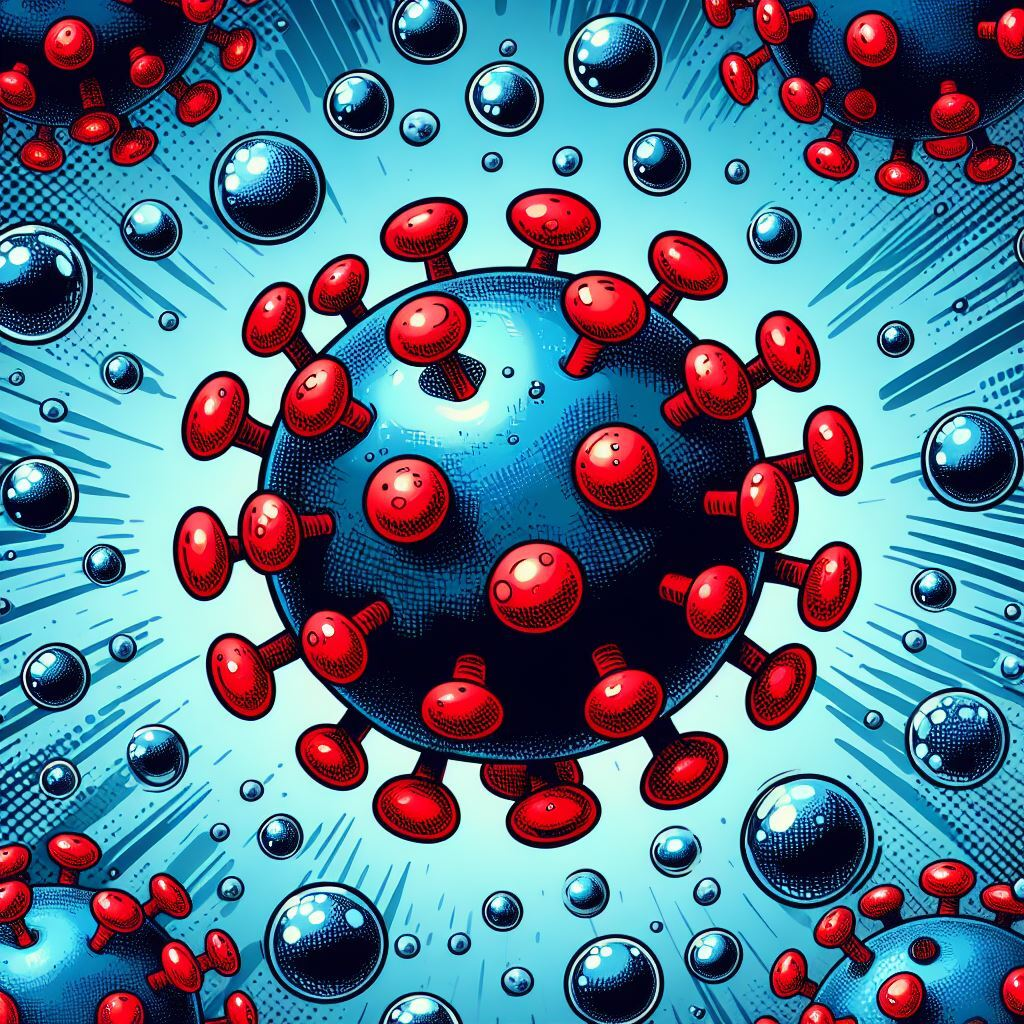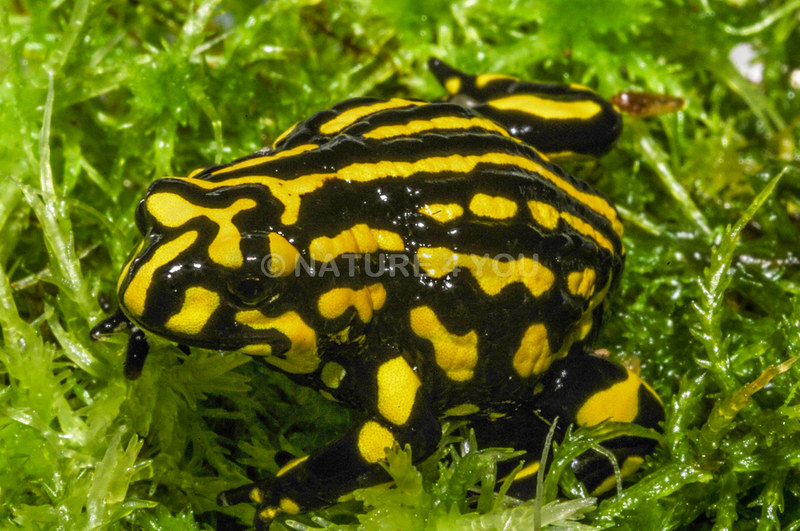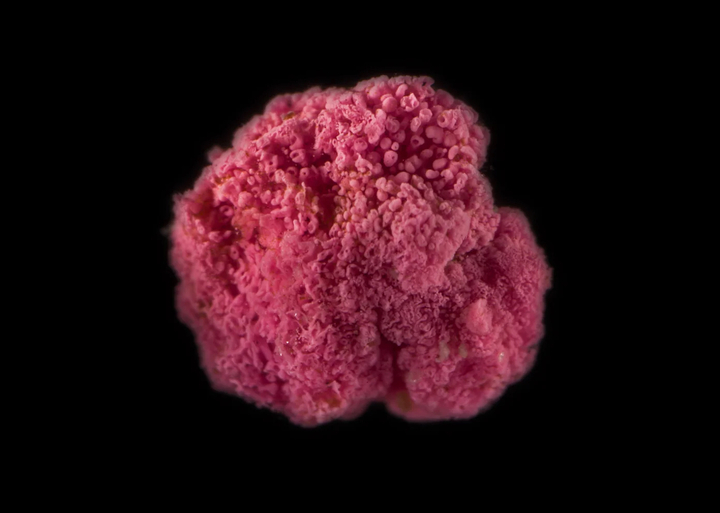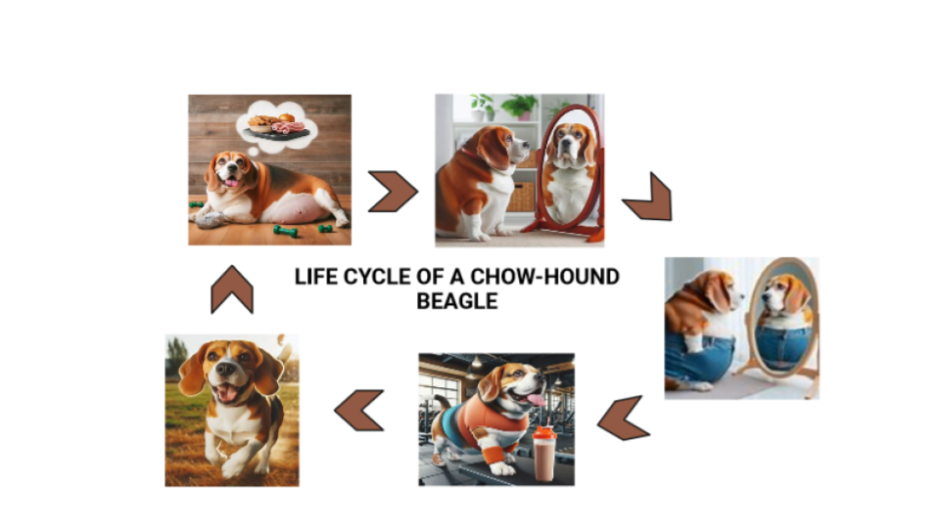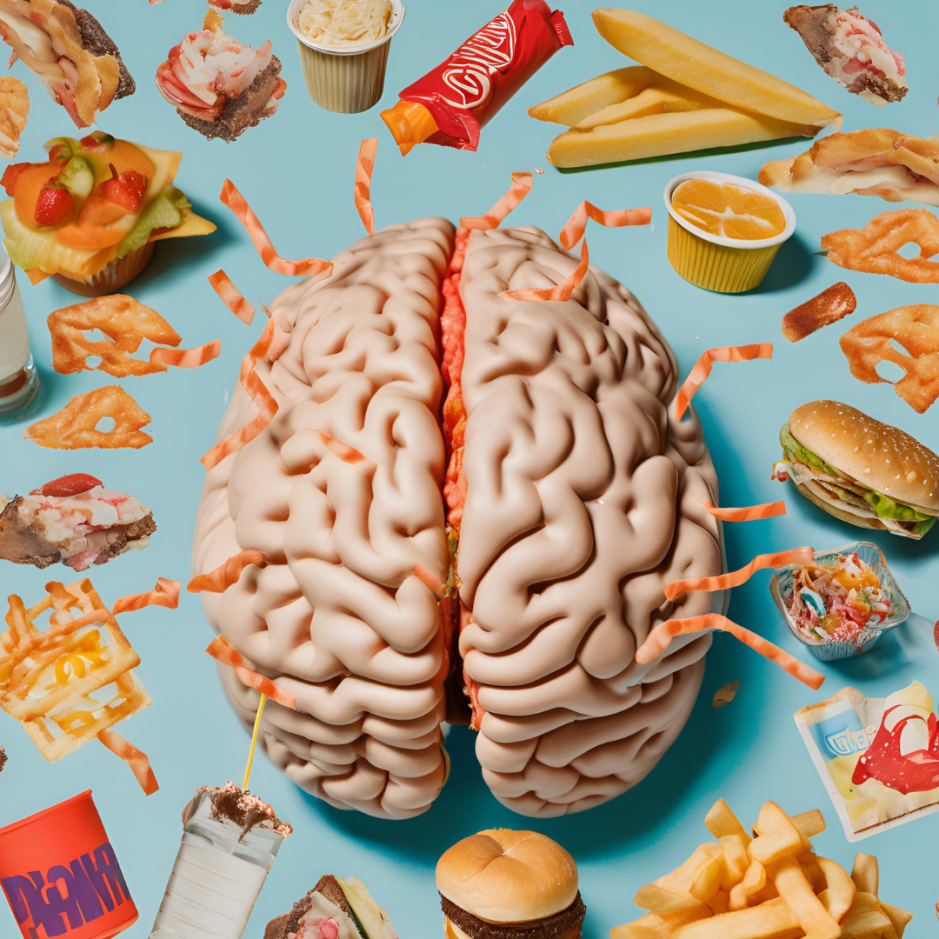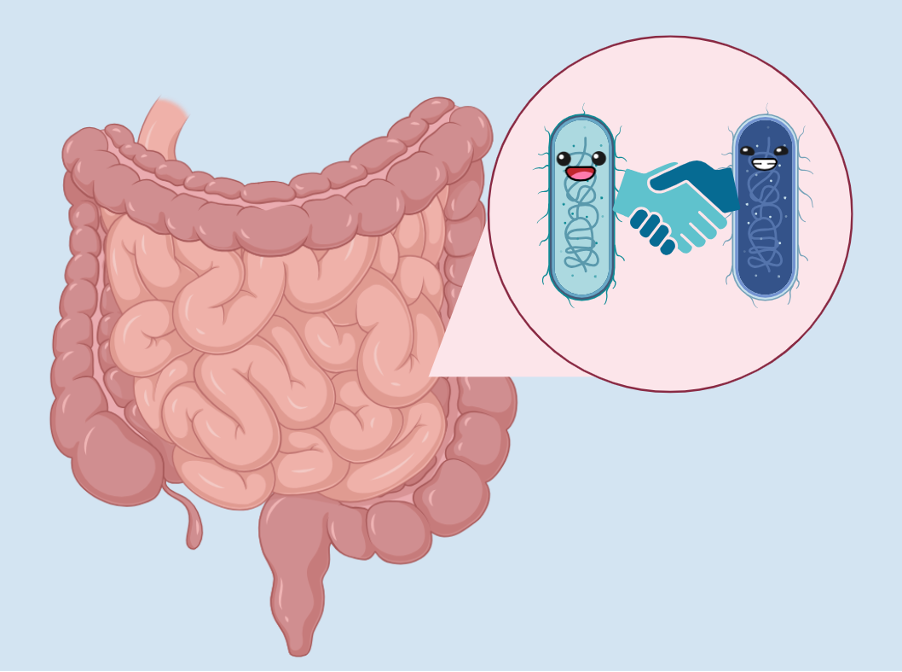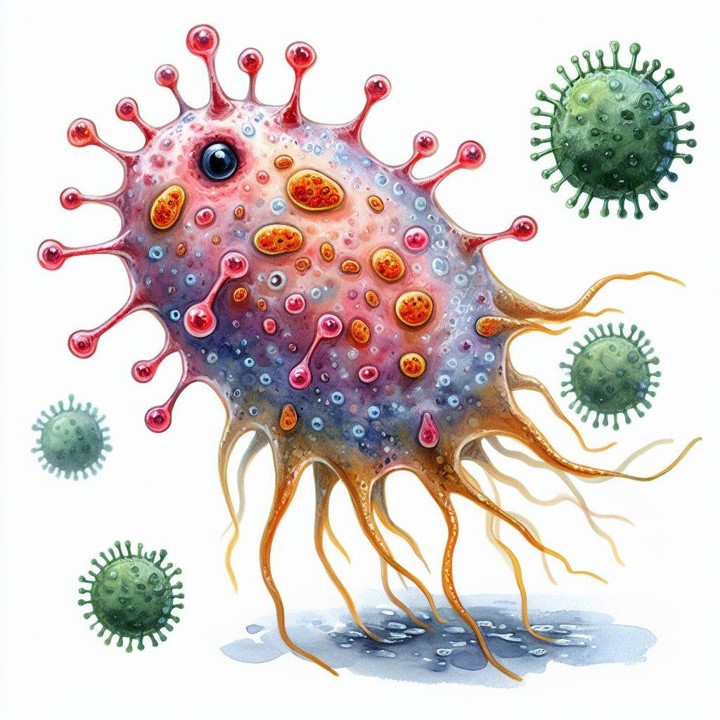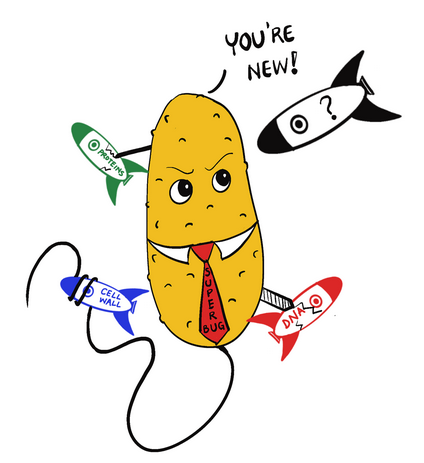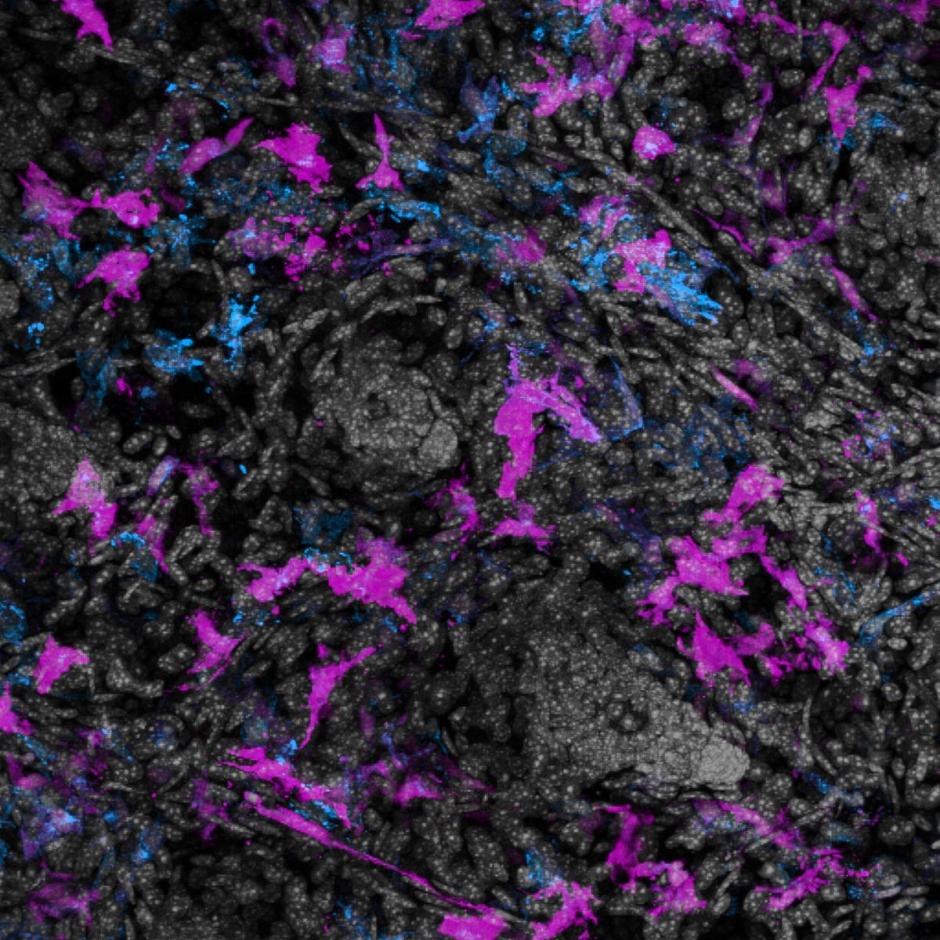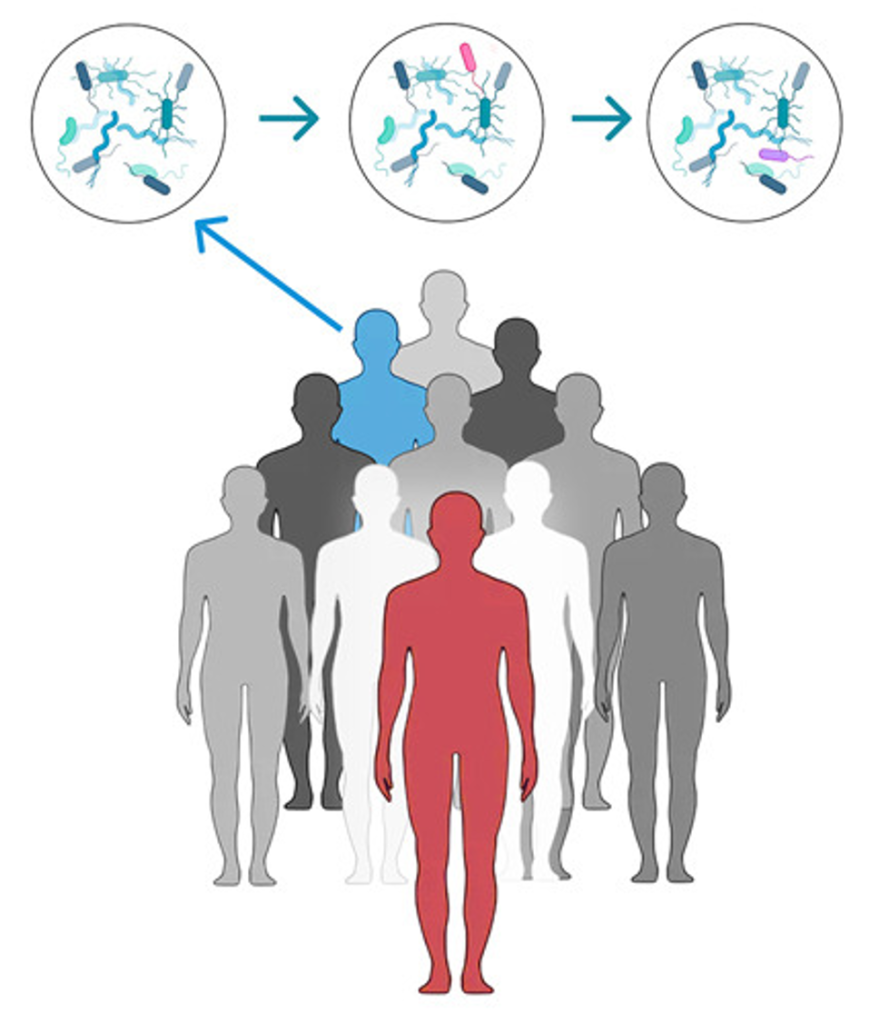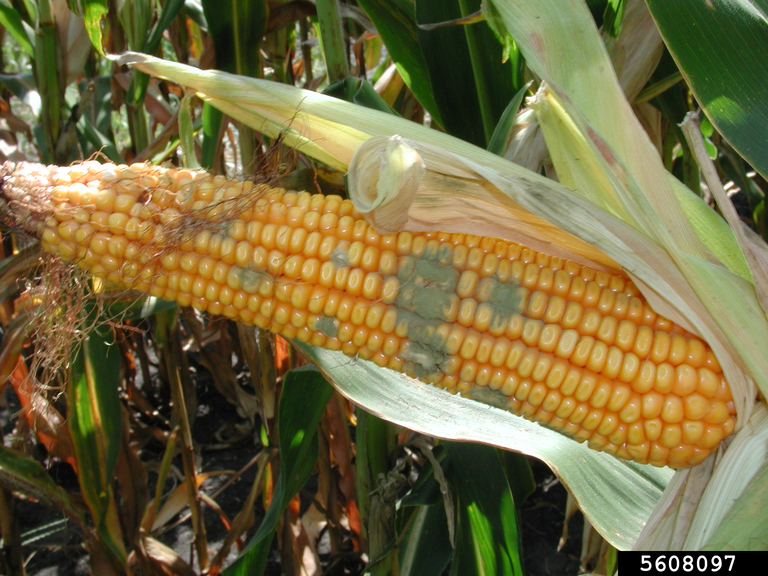
Breaking down the microbiology world one bite at a time
Barriers in Body Fluids Against Viruses Playing Dead
Viruses spread among people in many different ways. Respiratory viruses, such as the infamous SARS-CoV-2, disseminate through aerosols; these are tiniest particles or droplets in the air. Others are passed on with body fluids: blood, saliva, semen, urine, and breast milk.
But which evolutionary factors shape the transmission route of a viral pathogen? The more obvious ones are, for example, the site of viral multiplication within the body and the stability of the virus in body fluids or the environment. But there is more to it. The presence of a virus in a body fluid alone does not mean that it can be transmitted through it. For example, Zika, Dengue, or Ebola virus can be found in semen and saliva but are almost never transmitted sexually or orally. How is this possible? The authors of a recent research paper from Ulm University in Germany have delivered part of the answer to this question.
Some viruses pretend to be dying cells
Zika, Dengue, Ebola virus and some others share a common character trait: they exploit so-called “viral apoptotic mimicry” to make contact with their target cell and infect it. Apoptosis is a form of cell death that happens more than 10 billion times in your body every day. When a cell goes through apoptosis, it displays a specific signal on its surface – a lipid called phosphatidylserine or short, PS. The surrounding cells can recognize this signal and ingest the dying cell in a process called endocytosis.
Many viruses exploit endocytosis to infect their target cell. But the ones using viral apoptotic mimicry are even smarter: They carry and display PS in their own membranous envelope. Like a wolf in sheep’s clothing, these viruses play dead so that cells take them up voluntarily.
Synthetic and natural extracellular vesicles outcompete Zika virus
The authors of this study had already found that semen and saliva contain many extracellular vesicles (EVs); these are tiny droplets made of a lipid bilayer. These EVs compete with viruses for binding to their target cells and prevent viral infection. The authors wondered whether this competition is based on the presence of PS on the EV surface.
They first wanted to know whether Zika virus infection really relied on exposure of PS. They chopped off the PS from the viral surface and found that less virus infections took place. There was no effect for viruses that do not use viral apoptotic mimicry.
The authors then synthesized EVs with a defined composition of PS to study if EVs could interfere with infection. When the EVs lacked PS, infection with Zika virus was still possible. But with increasing concentrations of PS in the EVs infection with Zika virus was reduced because the EVs competed with it for endocytosis. They even visually observed less viruses attached to cellular surfaces in the presence of PS-containing synthetic EVs.
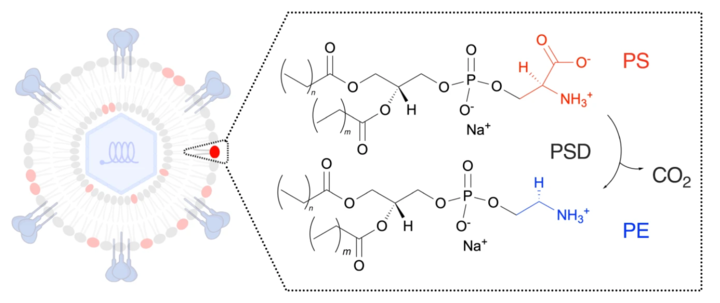
The authors extracted EVs from different body fluids and found that those from semen, saliva and urine had the overall highest levels of PS. In contrast, the PS level in blood EVs was rather low. Just like the synthetic EVs, the natural EVs also interfered with infection of viruses that exploit viral apoptotic mimicry.
The authors generated hybrid, fluorescent EVs and demonstrated a link between an increasing number of EVs and a decreasing number of viruses attached to the cell surface. They even confirmed the competition between Zika virus and semen-derived EVs on human vaginal tissue coming from patients.

Extracellular vesicles in body fluids dictate transmission routes
Let us recall the question which started this story: How is it possible that some viruses are present in certain body fluids but not transmitted by those? This article introduces PS-exposing EVs in body fluids as an effective barrier against infection of apoptotic mimicry viruses. The lower abundance of PS-exposing EVs in the blood may explain why these viruses are usually transmitted through blood-sucking insects and direct blood exposure.
EVs have become quite a hot topic over the past years. A drug made of a PS-containing EV-like structure is already safely applied in cancer therapy. Such drugs could be further tested as therapeutic options against apoptotic mimicry viruses in the coming future.
Link to the original post: Groß R, Reßin H, von Maltitz P, Albers D, Schneider L, Bley H, Hoffmann M, Cortese M, Gupta D, Deniz M, Choi JY, Jansen J, Preußer C, Seehafer K, Pöhlmann S, Voelker DR, Goffinet C, Pogge-von Strandmann E, Bunz U, Bartenschlager R, El Andaloussi S, Sparrer KMJ, Herker E, Becker S, Kirchhoff F, Münch J, Müller JA. Phosphatidylserine-exposing extracellular vesicles in body fluids are an innate defence against apoptotic mimicry viral pathogens. Nat Microbiol. 2024 Apr;9(4):905-921. doi: 10.1038/s41564-024-01637-6.
Featured image: Created using Bing Image Creator
